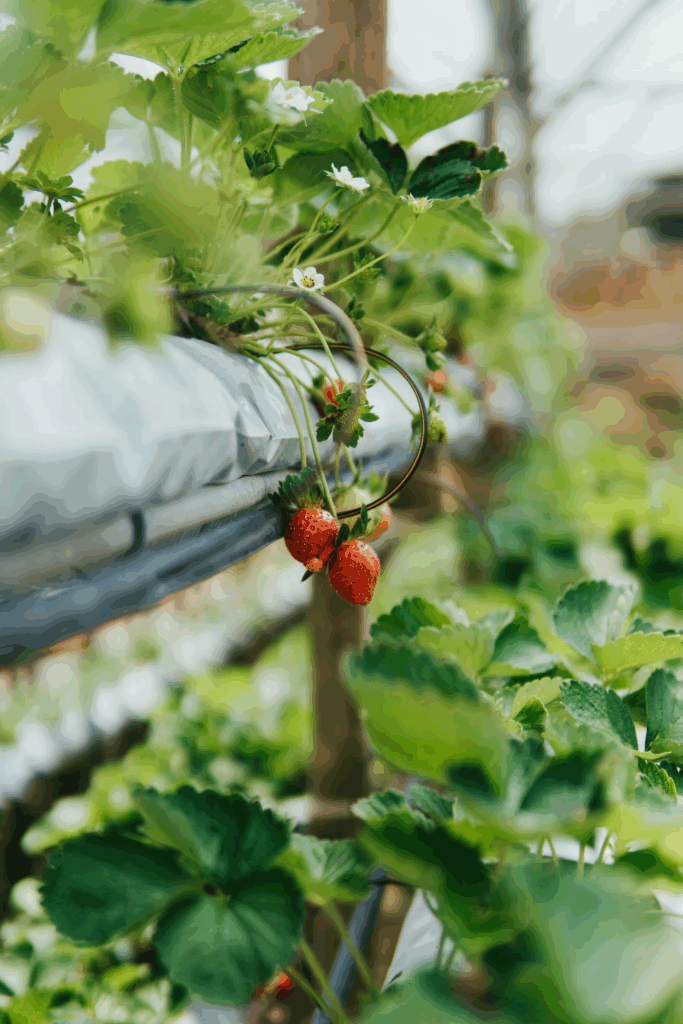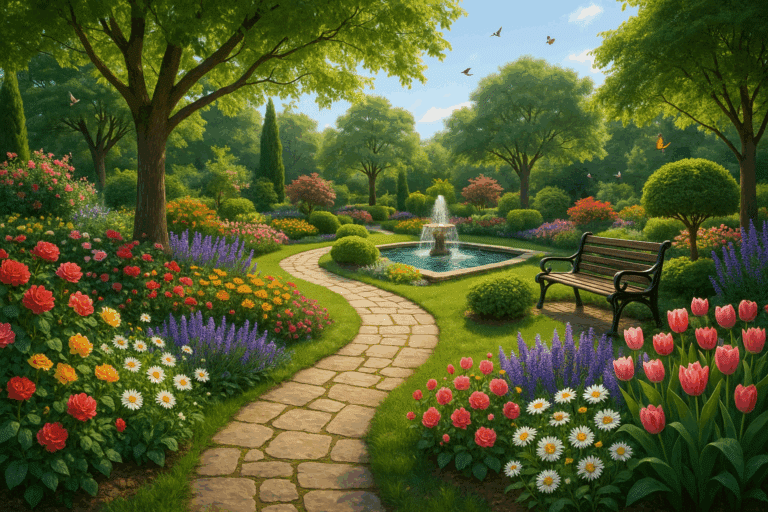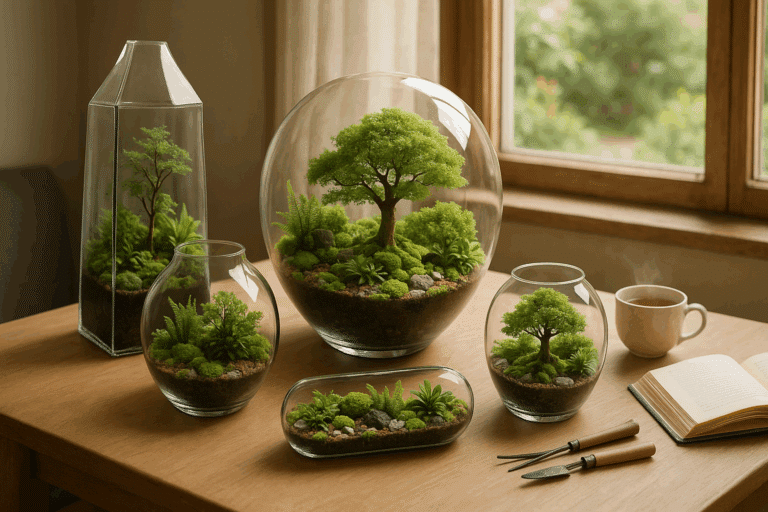Elevating your green space with a touch of artisan flair is not only aesthetically pleasing but surprisingly simple with Macramé Hanging Gardens.
An age-old art form, Macramé, transforms ordinary gardens into floating oases of lush, green beauty. Today’s trend towards embracing a more natural and holistic lifestyle blends seamlessly with the timeless appeal of Macramé. The resurgence of this vintage craft in modern homes breathes new life into herb gardens by displaying them in a unique, sophisticated, and space-saving way.

In this detailed feature, you will be introduced to the world of Macramé Hanging Gardens. Learn how they can significantly enhance your herb garden’s visual appeal, increase the longevity and health of your herbs, and create an alluring focal point in your living space. Experience the joy of crafting your own Macramé Hanging Garden and the satisfaction of watching your herbs flourish in style.
So, are you ready to give your herb garden a stylish makeover? Stay with us as we delve deeper into the intricacies of Macramé Hanging Gardens – unveiling its historical roots, exploring its modern revival, and guiding you through a step-by-step tutorial to create your own piece of suspended paradise. It’s time to elevate your herb garden and let it grow in style! 🌿🌱
The Art of Macramé: From Origins to Modern Day Herb Gardens
The art of macramé has roots stretching back to the ancient Babylonians and Assyrians. Primarily used for decorative purposes and clothing, the intricate knotting technique was also used in religious settings. Over the centuries, the craft has evolved, and today, it has found a unique application in the realm of gardening.
During the 13th century, Arab weavers are believed to have introduced macramé to Europe, where it became especially popular in Italy and France. Sailors played a significant role in spreading the technique globally, using it to decorate their ships and trade handmade items in port cities. In the 1970s, macramé experienced a revival as part of the bohemian decor trend, and today it is enjoying a resurgence once more. Now, it’s not just seen in wall hangings and fashion accessories, but in practical and stylish applications like hanging planters. This modern interpretation blends art, utility, and a touch of nature, breathing new life into an ancient craft.
Macramé and Herb Gardens: A Match Made in Heaven
Herbs are a popular choice for home gardeners due to their utility in cooking and their relatively easy maintenance. Incorporating macramé hanging gardens into your herb garden design has numerous benefits. Firstly, herbs require ample sunlight, and hanging them near windows or on balconies can ensure they get the light they need. Secondly, macramé hanging gardens allow for vertical gardening, which can drastically increase the amount of space available for growing herbs.
Building Your Own Macramé Hanging Garden: A Step-by-Step Guide
Creating a macramé hanging garden may seem daunting, especially for beginners. However, with a little patience and practice, you can craft a beautiful, functional hanging garden for your herbs that not only saves space but adds a stylish, natural element to your home decor.
Materials Needed
- Cotton macramé cord (approx. 24 meters total)
- A wooden ring or dowel for hanging
- Scissors
- Ruler or measuring tape
- Small plant pots (lightweight, ideally plastic or biodegradable)
- Herb plants or seeds (e.g., basil, thyme, mint)
- Optional: decorative beads, hooks, or suction cups for mounting
Step 1: Cutting Your Cord
First, cut your macramé cord into eight equal lengths. The exact length depends on how long you want your hanging garden to be, but a good starting point is around 3 meters per strand, giving you 24 meters total. It’s always better to cut slightly more than you think you’ll need—extra cord can always be trimmed later.

Step 2: Attaching Your Cord to the Ring or Dowel
Take each cord and fold it in half to create a loop at one end. Attach all eight cords to your wooden ring or dowel using a lark’s head knot: pull the loop over the dowel, thread the loose ends through the loop, and tighten. You should now have 16 strands hanging down.
This ring or dowel will act as the anchor for your hanging garden. You can suspend it from a ceiling hook, a sturdy curtain rod, or even a wall bracket, depending on your available space.
Step 3: Crafting the Net
Now, it’s time to start crafting the net that will hold your plant pots. Using a simple square knot, tie the cords together. For the first row, tie every two cords together. On the second row, tie the neighboring cords from two adjacent knots. Repeat until you’ve created a net large enough to hold your plant pot. The number of rows you need will depend on the size of your pot and the length of your cords. Once your net is finished, tie all the cords together at the bottom with a secure knot to form a sturdy base. If you’d like, you can add decorative beads or wrap colored thread around certain sections for a personalized touch.
Before placing your pot into the net, test the structure by gently pulling on different parts to make sure the knots are tight and the net is secure. You don’t want any surprises after your plant is inside!
Choosing the Right Herbs for Your Macramé Hanging Garden
Not all herbs are suitable for hanging gardens. Some require more space to grow than others, while some are more susceptible to diseases when grown in close quarters. Here are a few herbs that are ideally suited for hanging gardens:
- Basil: A popular herb in many cuisines, basil is well-suited for hanging gardens. It thrives in warm, sunny locations and adds a fragrant, leafy presence to your display.
- Parsley: This versatile herb is easy to grow and does well in both sunny and partially shaded locations. It also recovers quickly after harvesting.
- Rosemary: Known for its fragrant leaves, rosemary is a hardy herb that can tolerate a variety of conditions, making it a good choice for a hanging garden.
- Mint: Another great option, mint spreads quickly and benefits from being contained in a pot. Its refreshing aroma is an added bonus for kitchens and patios.
The Art of Macramé: From Origins to Modern Day Herb Gardens
The art of macramé has roots stretching back to the ancient Babylonians and Assyrians. Primarily used for decorative purposes and clothing, the intricate knotting technique was also used in religious settings. Over the centuries, the craft has evolved, and today, it has found a unique application in the realm of gardening.
Maintaining Your Macramé Hanging Garden
Herbs are a popular choice for home gardeners due to their utility in cooking and their relatively easy maintenance. Incorporating macramé hanging gardens into your herb garden design has numerous benefits. Firstly, herbs require ample sunlight, and hanging them near windows or on balconies can ensure they get the light they need. Secondly, macramé hanging gardens allow for vertical gardening, which can drastically increase the amount of space available for growing herbs.
Additionally, macramé adds an element of natural texture and beauty to indoor and outdoor spaces. The soft cords contrast beautifully with the vibrant greens of herbs like basil, thyme, and oregano. With a range of knotting techniques and styles available, each macramé piece can be customized to fit the aesthetics of your home—be it minimalist, rustic, or bohemian.
The portability of macramé planters is another huge advantage. Unlike fixed garden beds, these hanging gardens can be relocated with ease. This means you can adapt to the seasons by moving your herbs closer to a sunny window during the winter or outside for more warmth in the summer.
Moreover, crafting your own macramé holders fosters mindfulness and creativity. The repetitive motion of knotting can be meditative and calming—a therapeutic hobby with a tangible reward. And when paired with the joy of harvesting your own fresh herbs, it becomes a fulfilling way to blend art, functionality, and nature.
Watering Your Hanging Garden
Watering is crucial for any garden, and your macramé hanging garden is no exception. Most herbs prefer their soil to be slightly moist, but not waterlogged. It’s essential to ensure your plant pots have adequate drainage to prevent water buildup, which can lead to root rot. Always allow the top inch of soil to dry out before the next watering to avoid over-saturation.
The type of container you use also affects watering needs. Terra cotta pots, for example, are porous and allow for better airflow and evaporation, which means they might require more frequent watering than plastic or ceramic containers. Additionally, because macramé planters are suspended, they tend to dry out more quickly than grounded pots due to increased air circulation. Keep this in mind during warmer months when your herbs may need more frequent attention.
A helpful habit is to water your herbs early in the day. This gives the plants time to absorb moisture before the heat of the day and reduces the risk of fungal diseases that thrive in cool, damp conditions overnight. Using a watering can with a narrow spout will help you target the base of the plant and avoid wetting the leaves, which is especially important for disease prevention.
Ensuring Adequate Sunlight
As previously mentioned, herbs require ample sunlight to thrive. Make sure your hanging garden is situated in a location that receives at least 6–8 hours of sunlight per day. South-facing windows are often the best indoor locations for sun-loving herbs like basil, rosemary, and thyme. If your space doesn’t get sufficient natural light, you may need to invest in artificial lighting.
LED grow lights are a popular and energy-efficient choice. They emit the right wavelengths of light for plant growth and generate very little heat, which makes them ideal for indoor use. Position your grow light about 6 to 12 inches above the plants and follow a cycle of 12 to 16 hours of light per day. Automatic timers can help you maintain a consistent routine without the guesswork.
Checking for Diseases and Pests
Regularly check your herbs for signs of diseases or pest infestation. Common signs include yellowing leaves, stunted growth, and visible pests like aphids, whiteflies, or spider mites. Look under the leaves and at the base of the plants—these are favorite hiding spots for pests.
Neem oil or insecticidal soap is an effective and organic solution for most indoor pests. Be sure to isolate any affected plant immediately to prevent the spread of infestation to your other herbs. Maintaining good airflow, avoiding overwatering, and removing dead leaves are all proactive steps to keep your hanging garden healthy and resilient.
Conclusion
In conclusion, the “Grow in Style: Elevate Your Herb Garden with a Macramé Hanging Garden!” offers an inventive and stylish solution to gardening, particularly for those who may be limited by space. The Macramé Hanging Garden not only maximizes your growing space, but it also serves as a trendy and aesthetically pleasing home décor.
The beauty of this design lies in its simplicity and versatility. It’s perfect for those wanting to grow their herbs, regardless of whether they live in a spacious house or a compact apartment. The elegance of the macramé, coupled with the freshness of the herbs, brings a touch of nature and sophistication into any space.
Moreover, this approach to gardening provides an excellent opportunity for hobbyists and enthusiasts to indulge in a creative and therapeutic activity. Gardening has been proven to have numerous mental health benefits, and adding the artistry of macramé into the mix just increases the joy.
This innovative gardening method also encourages sustainability and conscious living. By growing your own herbs, you reduce the need for plastic packaging and frequent store trips, lowering your environmental footprint. Plus, having fresh herbs within arm’s reach enhances your culinary experience, adding flavor and freshness to every meal.
Overall, “Grow in Style” is not just about cultivating plants; it’s about fostering a lifestyle—a lifestyle that embraces nature, creativity, style, and wellness. The perfect mix of beauty and practicality, the Macramé Hanging Garden is truly a game-changer in the world of indoor gardening, bringing charm, purpose, and greenery into your everyday life.



